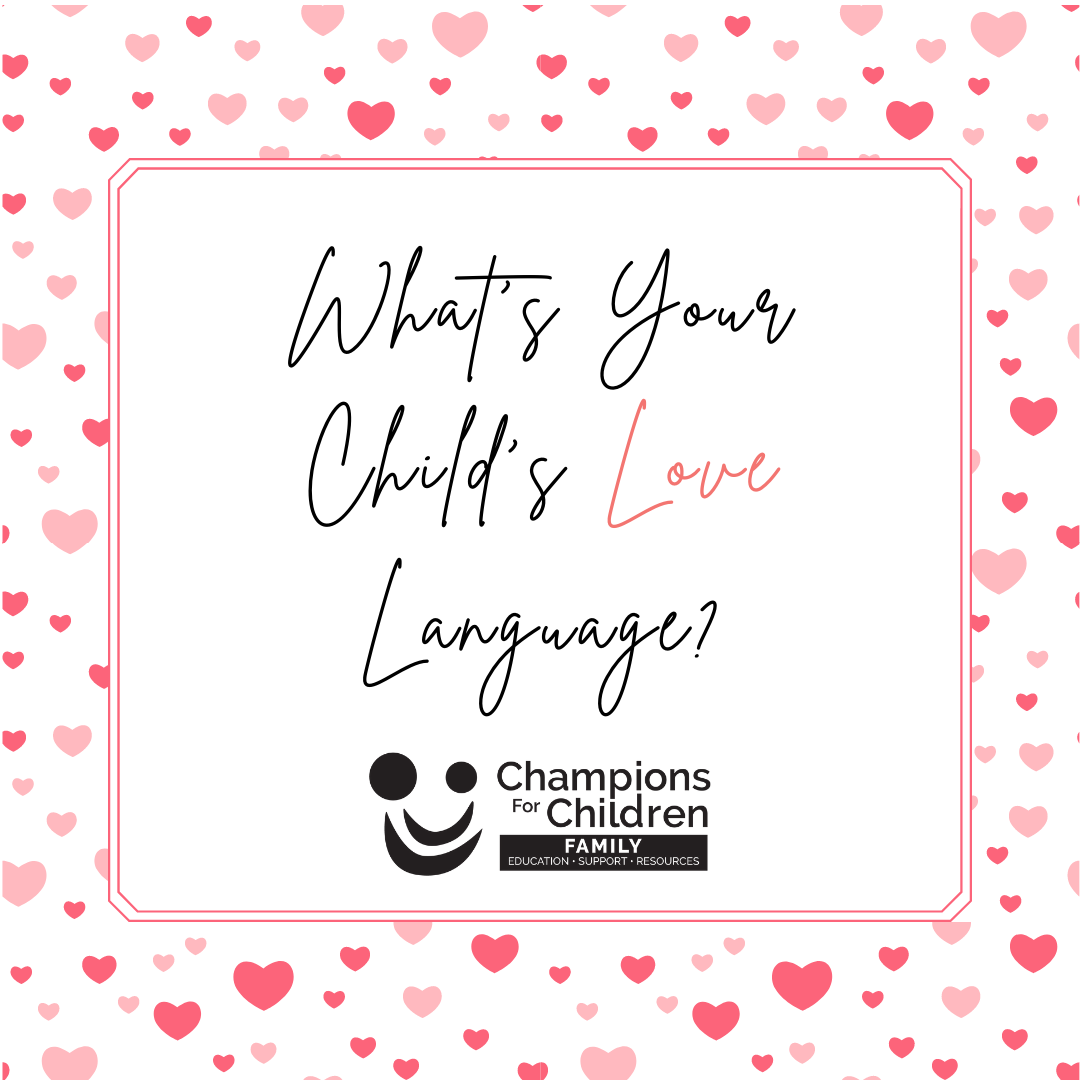What’s Your Child’s Love Language?
Give your child love in the best way they receive it

With Valentine’s Day coming up, now is a great time to think about how you are showing and teaching your child about love. Just like adults, children have their own love languages. Love languages are how a person receives love from others. There are five different love languages: physical touch, words of affirmation, acts of service, gifts, and quality time. Here are a few tips about how you can learn your child’s love language and examples of how you can give them love in the way they best receive it.
What’s Your Child’s Love Language?
Every child wants and responds differently to a mix of attention and affection from their parents or caregivers. But, how do you figure out what your child’s love language is? The key is to observe how they express affection to you and other loved ones. Oftentimes, how they express their love to you is how they want to be loved too. For example, if your child tends to give you gifts that they made or flowers from outside, their love language may be receiving gifts.
5 Love Languages
1. Physical Touch
Most children love being showered with hugs and kisses from their parents. They smile and laugh when receiving kisses, hugs, cuddles, or even high fives. However, other children may turn away from that type of affection. Follow your child’s cues and let them show you what they do and don’t like.
2. Words of Affirmation
If your child says uplifting words to you, or notices and comments on something that may seem small, words of affirmation may be their love language. You can give them this same love in return. When giving your child words of affirmation, get down to their eye level when communicating these affirmations to have the greatest impact. The words don’t always have to be said out loud. You can leave a special note in your child’s lunch box or send them an uplifting text message when you’re away from each other.
3. Acts of Service
Acts of services can vary by your child’s age. Your child may do family chores without being asked to do so or help out in other ways that benefit you and your family. From cleaning your child’s room to cooking their favorite meal or fixing their broken toy, children whose love language is “acts of service” appreciate it when their parents do even the smallest of tasks for them. Be mindful not to enable your child and instead foster their skills of independence by walking them through a process at times so that they build the confidence they need to do something without your assistance next time.
4. Gifts
If your child tends to give you gifts that they made or flowers from outside, their love language may be receiving gifts. You don’t have to spend a lot of money to show your love. These gifts can be small, like a flower from outside or their favorite sweet treat. Thoughtful gifts on non-holidays can help a child whose love language is receiving gifts feel loved and secured.
4. Quality Time
While you may be with your child every day, are you spending uninterrupted quality time together? Children whose love language is quality time value when their parent takes time to focus solely on them. It can be as simple as taking a minute to sing and dance together in the middle of making breakfast or cooking breakfast together. You can even take it a step further and plan a few hours together doing activities that you both enjoy, without any distractions or other people.
As a parent, it’s important to be patient and not impose your own love language on your children because it may result in the opposite of your desired outcome. Finding your child’s love language allows you to create continual connections with them and is the key to fostering strong a relationship. When children are loved and cared for, they can grow successfully and fulfill their potential.
Resources:
Teaching Your Children to Love
Child Love Language Advice
